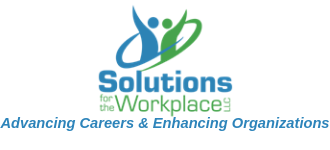Now that you’ve decided to apply for the Senior Executive Service (SES), it’s time to start thinking about your SES package.
Most SES vacancy announcements require 3 separate documents: a SES resume, Technical Qualifications (TQs)—also called Mandatory Technical Qualifications or Professional Technical Qualifications, and Executive Core Competencies (ECQ). Some agency announcements only require the submission of a 5-page SES resume (that includes evidence of the ECQs and any TQs) and may or may not ask for separate TQs. Please note that if you are selected for the position, you will likely have to complete a full set of ECQs or something similar.
Let’s discuss each part of the SES package in turn:
- SES Resume: A SES resume is typically 5 pages and includes:
- Executive Profile: Who are you and what do you bring to the table?
- Executive Experience: Focus on your last 10 years of experience (and primarily your GS-14 and GS-15 level work; that’s what will be considered executive)
- Executive Achievements. Be sure to include achievements that relate to the ECQs and TQs; your achievements should show how you have added value to your employers
- Metrics; think how many, how much, and how often. Quantify the number of people you supervise, the size of your budgets, etc. Metrics provide context to your work
- Information about your leadership—not just your technical expertise. Consider incorporating the language from the ECQs as appropriate
- Significant leadership development, awards, and certifications
- Education
- Technical Qualifications: Think about the TQs as being similar to the old Knowledge, Skills, and Abilities (KSA) you may have written in years past. Your TQs should demonstrate your possession of the required technical qualifications; you should prove your expertise in these areas by providing specific examples of when you demonstrated the required qualifications. While not required, consider writing your TQs using the CCAR model: Challenge-Context-Action-Result. There is no official time limit for your TQ stories but obviously the more recent your stories, the better. Include as many metrics in your TQs as possible. Many announcements have page or character limits for your TQs so pay attention to any limitations before you begin writing.
- Executive Core Qualifications (ECQs): If selected, your ECQs and resume will go to the Office of Personnel Management (OPM) for consideration by an OPM-convened Qualifications Review Board (QRB) although only your ECQs are approved (or not). ECQs include the 5 ECQs—leading change, leading people, results driven, business acumen, and building coalition, along with the 28 embedded competencies. Each ECQ should be 2 pages in length and provide 2 specific examples of when you demonstrated the specific competency. All stories should be from the past 10 years (5 or so years is better, if possible) and you should only use each story once. All stories should represent your executive leadership, not managerial skills. Be sure to incorporate leadership language, write in first person (using I), avoid personal philosophy, and include as many metrics as possible. All ECQs should be written using the CCAR model and be error-free. Before starting to write, identify your stories and be sure that the stories meet the competency definitions provided in OPM guidance: https://www.opm.gov/policy-data-oversight/senior-executive-service/reference-materials/guidetosesquals_2012.pdf. You should plan to spend 40-50 hours writing your ECQs. Since the ECQs are used for almost every SES application and are about your leadership, do not worry about making them relevant to the specific position you are targeting. A strong set of ECQs should serve you for all of your SES applications.
